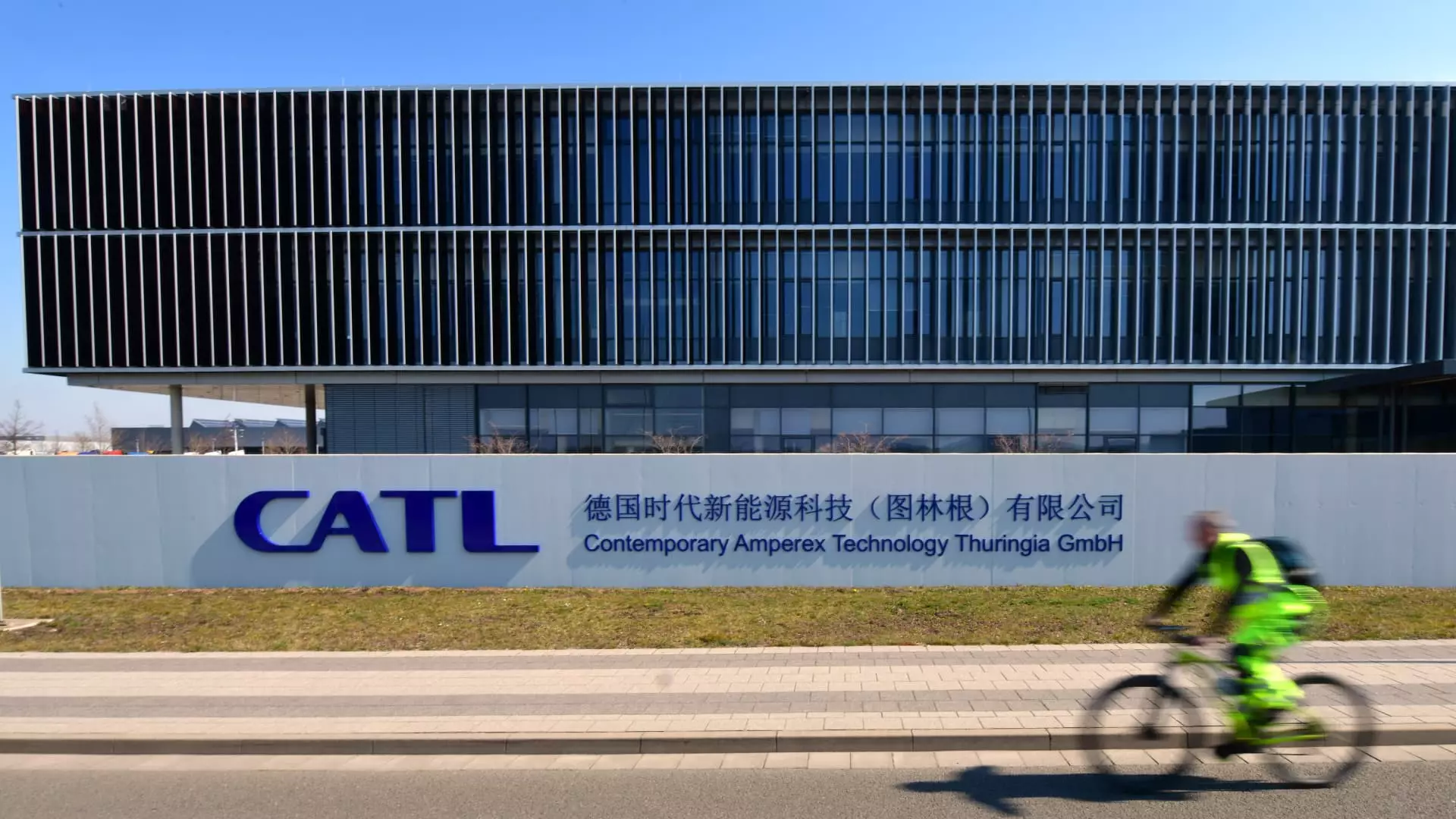China’s Contemporary Amperex Technology Co., Ltd. (CATL) has recently reported a staggering 9.7% decline in annual revenue, pulling back to 362 billion yuan (approximately $50.01 billion) for the 12-month period ending December. This surprising downturn marks CATL’s first revenue drop since it began releasing operational figures in 2015, a significant milestone that signals trouble in an industry once perceived as an unstoppable juggernaut. The data, falling short of a mean estimate of 368.7 billion yuan, paints a vivid picture of a company grappling with accelerating challenges.
The sharp decline in revenue, despite a commendable 15% rise in net profit to 50.74 billion yuan, raises eyebrows. It illustrates a dissonance between surging demand for electric vehicles (EVs) and market conditions that render profitability precarious. A closer examination reveals that CATL is navigating a brutal price war underscored by fierce competition within China’s burgeoning EV market. While the national push for greener transportation has propelled sales—jumping by 40% year over year to an impressive 11 million vehicles—the price pressure risks undermining the financial viability of leading players like CATL.
Price Wars and Market Share Dynamics
Understanding the dynamics of this price war is fundamental to assessing CATL’s future. While CATL boasts an impressive 45% market share in EV battery installations—serving automotive giants like Tesla, Volkswagen, and NIO—the reality of competition is harsh. As new entrants flood the market with aggressive pricing strategies, CATL finds itself at a crossroads. The company’s strategy of producing high-quality, lower-cost batteries is now under siege; can they maintain their market share while navigating the treacherous waters of industry volatility?
The resilience in CATL’s profit margins might suggest a robust business model, but the volatility of the market renders any semblance of stability fragile at best. If the price wars continue unabated, the very essence of CATL’s competitive edge could be compromised. Investors will be watching closely, not just for the company’s upcoming listing on Hong Kong’s stock exchange—anticipated to be the city’s largest IPO since Kuaishou’s—but also for the strategic decisions that will define its path in a shifting landscape.
Global Expansion Amidst Unforeseen Challenges
Yet, it isn’t just the domestic market that poses challenges. The geopolitical landscape and global supply chain issues add another layer of complexity. The recent designation of CATL by the U.S. Department of Defense as a “Chinese Military Company” could hinder its global growth prospects, particularly in the lucrative U.S. market. This categorization, which the company vehemently denies, could see it barred from contracts with key government entities, limiting avenues for expansion.
Despite these challenges, CATL has shown foresight in investing overseas, including a powerful presence in Europe with a factory in Hungary and a joint venture in Spain with Stellantis. While these moves signal a commitment to diversification and resilience, it’s crucial for CATL to navigate not just financial but also political landscapes adeptly. What will this look like in an era where technological supremacy and geopolitical interests are increasingly intertwined?
CATL’s recent revenue drop unveils the predicaments facing an industry poised on the brink of a green revolution. As the largest EV battery maker grapples with immediate fallout from market dynamics and long-term geopolitical ramifications, the question remains: Can CATL pivot effectively in an environment that demands agility, adaptability, and foresight to emerge stronger on the other side?

Leave a Reply